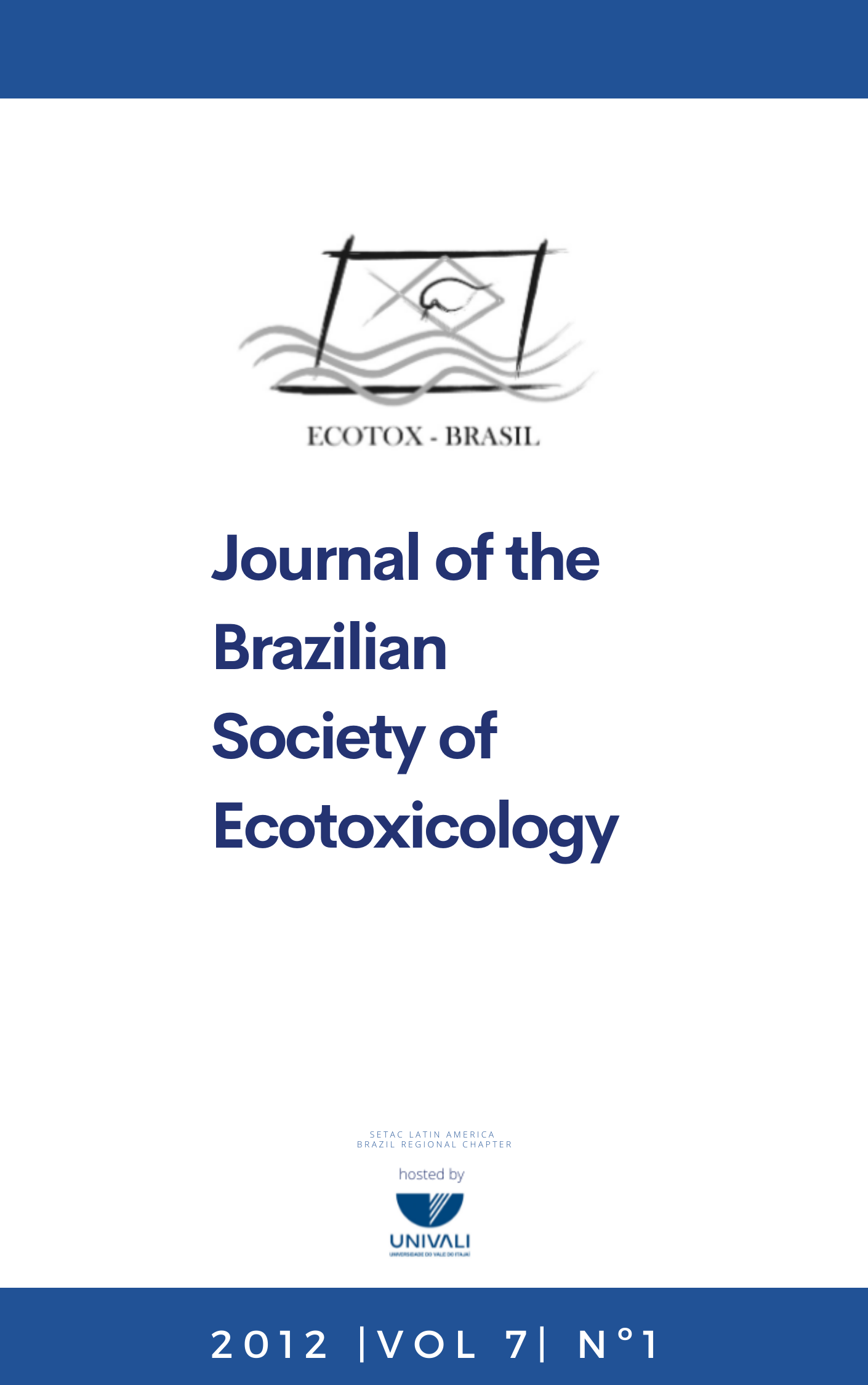Protocol for Ecological Risk Assessment in Aquatic Environment considering the Jacuí river environmental
Abstract
The contribution of this work is to present protocol for ecological risk assessment in an aquatic environment using data derived from environmental monitoring programs. The location focused by this study was a segment of the Jacuí River, in the town of São Jerônimo – RS, Brazil, which was assessed by applying an environmental monitoring program. The line of evidence recorded from the abiotic compartments surface water and sediments was considered an explanatory variable. The chemical evidence stemmed from the presence of Hg, Pb and Zn, while the ecotoxicological evidence resulted from aquatic toxicity tests using Ceriodaphinia dubia for surface water and Hyalella azteca for sediments. The biological evidence from the Shannon-Weaver index, species richness, equitability and numerical density data in zooplanktonic and benthonic communities was considered the response variable. The ecological risk (Low, Medium, and High) was characterized by the association with environmental quality (Great, Warning, and Critical), established by the lines of evidence recorded. The results have shown that it is possible to use environmental monitoring programs to evaluate of ecological risk assessment, if they have chemical and ecotoxicological data required by environmental laws, and monitoring data of resident biota.
Keywords: ecological risk assessment, aquatic environment, metals, bioindication, ecotoxicology.
*Corresponding author: Karin Tallini, e-mail: karin.tallini@ufrgs.br
Downloads
Downloads
How to Cite
Issue
Section
License
Copyright © 2006 ECOTOX-Brasil
Copyright notice: It is a condition for publication that manuscripts submitted to this journal have not yet been published and will not be simultaneously submitted or published elsewhere. By submitting a manuscript, the authors agree that copyright for their article is transferred to the Sociedade Brasileira de Ecotoxicologia (ECOTOX-Brasil) if and when the article is accepted for publication. The copyright covers the exclusive rights to reproduce and distribute articles, including reprints, photographic reproductions or any other reproduction of a similar nature, including translations. No part of this publication may be reproduced, stored in a retrieval system or transmitted in any form or by any means, electronic, mechanical, photocopying, recording or otherwise, without permission of the publisher.
Notice: While every effort is made by the EEC, editors and editorial board to see that no inaccurate or misleading data, opinions or statements appear in this journal, they wish to make it clear that the contents of the articles and advertisements published herein are the sole responsibility of the contributors or advertisers concerned. Accordingly, the EEC, the editorial board and editors and their respective employees, officers and agents accept no responsibility or liability whatsoever for the consequences of any inaccurate or misleading data, opinion or statement.




